Living in a state like Colorado, we get to see firsthand the challenges cannabis companies face when it comes to marketing their business.
I was curious to see if we took a look back at the Prohibition era—would we find any parallels between that era and the cannabis industry today?
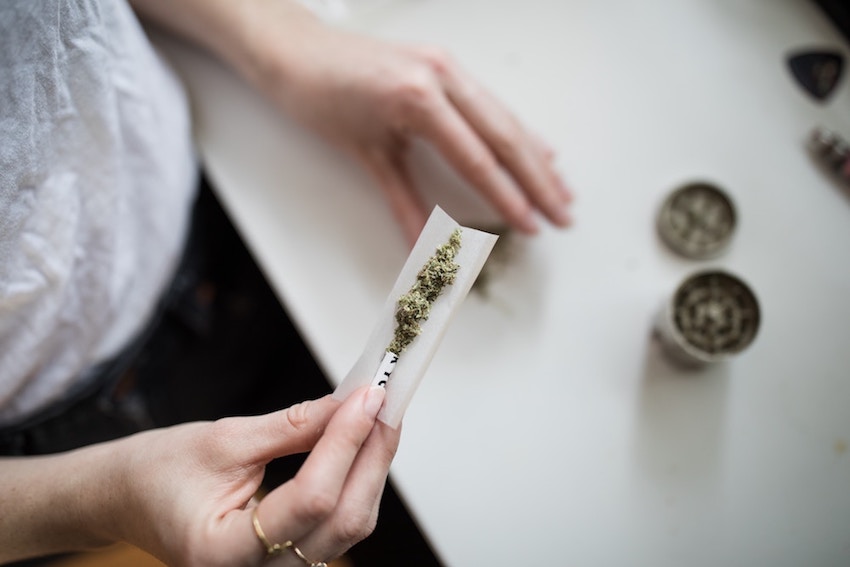
This article will cover:
I’m going to start off by giving you a brief history about beer and liquor, and how the troubles they faced are popping up again...only this time with cannabis.
History has a funny way of repeating itself, for better or worse. We’ve seen this happen with fashion, music, and even cultural trends. Now, history is repeating itself via substances and political turmoil.
How has the perception of alcohol changed throughout US history?
Let’s take a look at what the U.S. was like in 1920. During this decade, American life had changed drastically: city populations exceeded farm life for this first time in history! People were enjoying a “consumer-based society,” which meant they had a little extra money to blow.
Social behaviors weren’t the only changes happening in the 1920’s, however—America’s political views were also changing radically.
As social statuses began to change, some of the wealthy Americans started questioning the effects of alcohol consumption. A movement began, thus creating the “Wets vs. Drys,” or the two parties involved in the Prohibition era.
The “Drys” believed that banning the substance would lower crime rates (especially in impoverished or immigrant-dense areas), improve family life, and enhance national character. The “Drys” were primarily made up of religious groups who partnered with the women’s suffrage movement; they believed that pinning spouse abuse on alcohol would help convince women to go “dry.”
Meanwhile, the “Wets” disagreed completely: they didn’t think that banning alcohol would improve any of those issues whatsoever.
Due to the heated controversy over alcohol, the 18th Amendment was passed, thereby banning the manufacture, sale, or distribution of intoxicating liquors, but not its consumption. Contrary to common belief, people could still drink during the Prohibition era; however, the poor and immigrants (who were the primary target of the ban) could not afford long-lasting liquors.
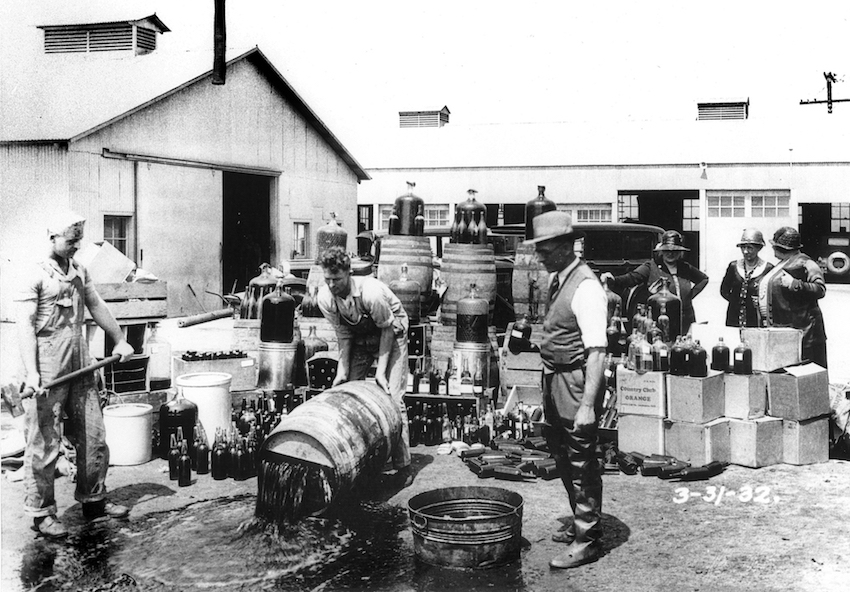
The prohibition totally backfired on creating a “better America;" instead, the ban did quite the opposite in a few ways:
The Economy Worsened
It cost the government $300 million to enforce the ban, and America suffered a tax revenue loss of $11 billion in the process.
The ban was also bad for business: restaurants couldn’t afford to stay open without liquor sales, and theater revenues declined drastically.
Overall, America also lost over 1,000 jobs due to all of the alcohol-related businesses that had to shut down.
Crime Rates Skyrocketed
The ban opened the doors for a black market, which led to more gang violence than ever before. One of the most famous gang members from the Prohibition era was Al Capone, who profited around $60 million annually from bootlegging.
This also tainted our society because it turned law-abiding citizens into criminals.
During the Prohibition, the police force became shady and corrupt, too, because they would take bribes from people who were caught.
Americans Suffered
When the poor realized that they couldn’t afford long-lasting liquors, they decided to try and craft their own. This era proved that, where there’s a will, there's a way.
However, some of them didn’t quite know what they were doing when it came to distilling, so a lot of people were poisoned due to consuming bad liquor. This led to a loss of thousands of lives per year during the Prohibition. (All that for a drink!)
Finally, after 13 dry years, Americans were fed up with the ban. This led to the election of Franklin Roosevelt, who passed the 21st Amendment, creating a very happy, wet America.
The Prohibition era started with a false idea that alcohol led to bad behavior and worsened Americans. Obviously, alcohol has caused some casualties over the years, but it really comes down to the consumers and their self control.
Now, we are facing that same battle—but with cannabis.
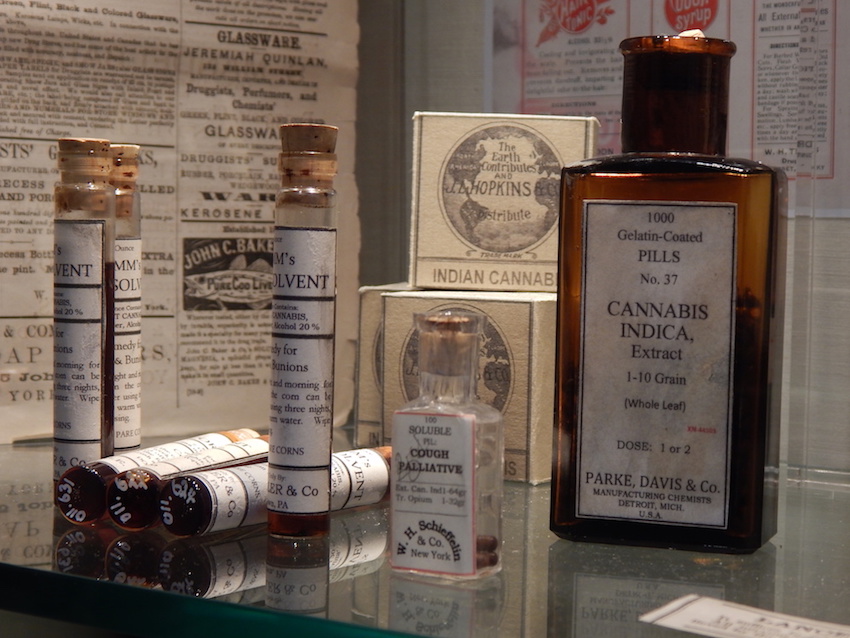
Marijuana has had a hard time being accepted in the US. In the 1800’s, pharmacies used cannabis and hashish in their medicines; however, certain states forced pharmacies to include “poison” labels on any medicine containing the drug. This became more strict in 1906 when the Pure Food and Drug Act was passed, forcing all medication to be labeled and required a doctor’s prescription for the consumption of the medicine.
Several laws were passed across the nation from the early 1900’s - 1930’s, putting more and more strict regulations on marijuana consumption, distribution, and labeling. Most of the laws were influenced by the idea that cannabis was a “habit-forming” drug—certain doctors were even weeded out of the industry and told that they were not allowed to write prescriptions due to the fact that they personally consumed marijuana.
The Marihuana Tax Act was passed in 1937, making it illegal to be in possession of or transfer marijuana throughout the United States under federal law. This act outraged the medical industry because it singled out doctors and pharmaceutical practices who sold and prescribed medicines infused with marijuana.
The AMA (American Medical Association) asked for the Marihuana Tax Act to be revoked and instead place marijuana under the Harrison Narcotics Act.
However, this wasn’t an option because the federal government’s hands were tied: according to the 10th Amendment, medicines could not be federally regulated because that power was reserved for individual states. Lawmakers knew that a tax was the only way in which they could legislate marijuana.
It wasn’t until 1969, when the Leary vs. United States case held the Marihuana Tax Act to be unconstitutional, that things changed. The argument succeeded because the tax act violated the 5th Amendment.
Due to this, Congress responded by passing the Controlled Substance Act as Title II of the Comprehensive Drug Abuse Prevention and Control Act of 1970, which repealed the Marijuana Tax Act. This may seem like a win; however, it completely outlawed cannabis, even for medical use.
Drugs were becoming problematic in the early 70’s, which led to the CSA classifying drugs by “schedules.” Schedule 1 is the worst category, and includes drugs like heroin, LSD, and peyote. How did marijuana end up on that list, even to this day? It turns out that Nixon added it to Schedule 1 despite evidence that the drug isn't harmful.
He appointed the Shafer Commission, an investigative body, to study marijuana for harmful effects. The commission recommended that marijuana be decriminalized and thus removed from Schedule 1. However, due to some outside payments to keep the drug classified as a Schedule 1, (*cough* pharmaceutical industries making too much money on other addicting drugs like opiates *cough*) Nixon decided to keep cannabis as a Schedule 1 drug.
During this time, the DEA was born in order to try and stop the drug industry from growing. They believed that cannabis was a bad drug (even though there weren’t any facts to back that up).
In 1976, California researched the economic cost of marijuana laws and realized that they were spending about $35 to $100 million annually on maintaining the federal laws for cannabis possession. They passed a law reducing penalties for carrying marijuana, allowing California alone to cut the annual spending towards arrests for cannabis possession by 74% in their first year.
The argument over whether cannabis is harmful or not continued throughout the 70’s, 80’s, and even 90’s. During this time, state interest emerged in Oregon, Alaska, and Maine, where marijuana was decriminalized for a whole decade. New Mexico also approved a short-lived medical marijuana research program in 1978.
Eventually, the baby boomers realized that Marijuana was NOT the “demon weed” that history made it out ot be, and so The National Organization for the Reform of Marijuana Laws (NORML) pushed to legalize medical marijuana at the state and local level.
In 1996, California voters approved Proposition 215, the first legislation legalizing marijuana for medical purposes at a state level. Since then, 22 other states along with the District of Columbia and Guam have enacted some form of medical marijuana laws, including Colorado. Currently, other states are showing signs of following suit, which is a good sign for the cannabis industry.
How are they similar?
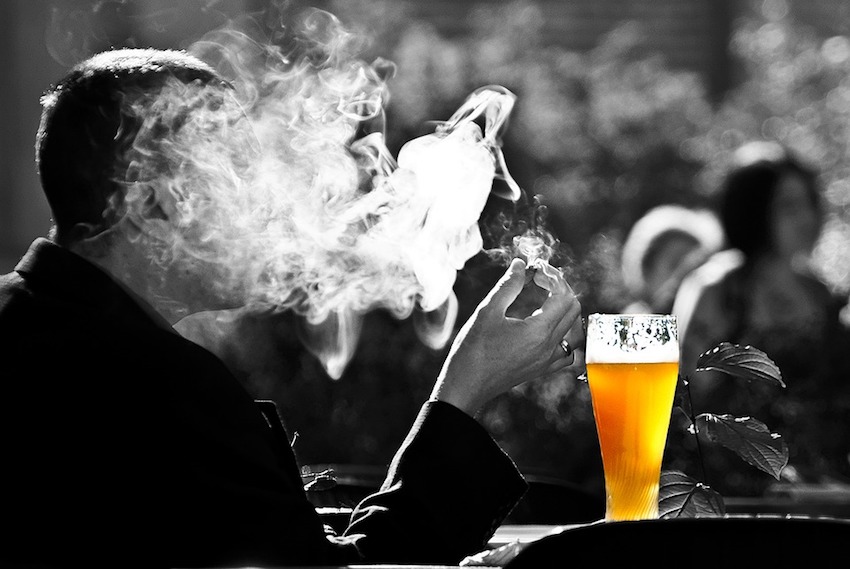
If you look at the history of beer, liquor and cannabis side-by-side, you’ll see that they faced a lot of the same challenges:
- Both faced issues with the government due to a lack of research and an unwillingness to conduct it.
- In each case, the biggest contributing factor for legalization has come from the American people through lobbying, activism, and ballot initiatives.
- State-level legalization opened the doors, which allowed these substances to be used, produced, manufactured, and sold.
- The population seems to be split on whether or not these stimulants have an effect on “American character.” They associate liquor with criminal activity and spouse abuse, just like they associate marijuana with being lazy and unmotivated.
- Each cause was associated with minorities. For the Prohibition era, the ban targeted behaviors from immigrants and the poor, forcing a connection between them and the consumption of alcohol. Nixon connected marijuana with Mexicans to try and use race as a factor in banning the substance.
Okay, I know that was a long history lesson, so now we’ll get into how these events in history have affected marketing then and now.
How is marketing repeating itself?
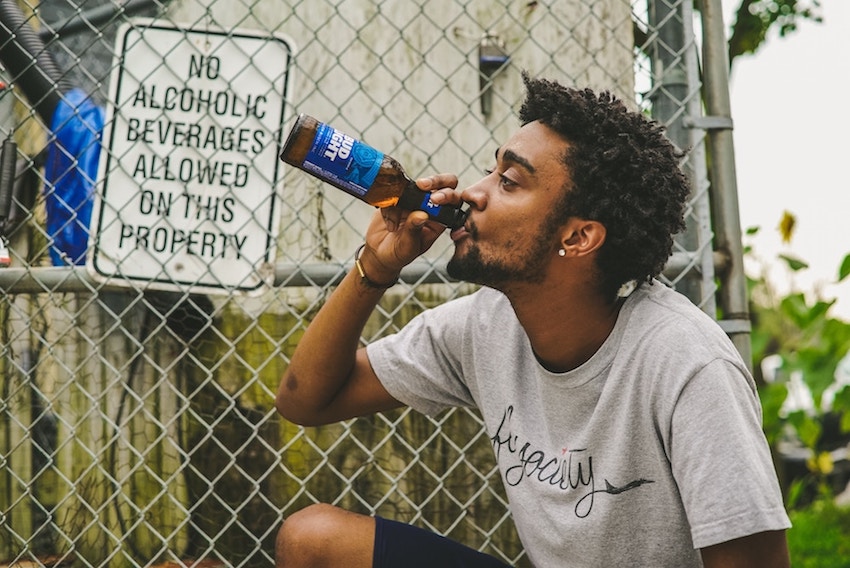
Very briefly, let’s go over some marketing highlights for beer and liquor across the decades.
1930’s
Liquor companies were terrified to start advertising after the Prohibition because they didn’t want the dry era to return; therefore, they formed their own bans that outlawed radio and TV ads in 1938, five years after the Prohibition era had ended.
Beer, on the other hand, advertised through print ads and word of mouth marketing during that same time. Guinness, the famous Irish dry stout beer, was a leader in the advertising industry for about 40 years.
1940’s
Beer forged a very powerful relationship with television and sports. This was initially formed due to their ability to sponsor sports telecasts or other TV programs. In 1947, Hyde Park Brewery in St. Louis became the first brewery to sponsor a TV program. Beer is what sparked the sponsorship industry as a whole for all sorts of TV broadcasts—talk about making history happen, right?
Ironically, the simple lack of advertisements from liquor companies at that time led consumers to believe that liquor was worse for them than beer and wine—and this sentiment held true for decades.
1950’s - 60’s
Animated ads started popping up within the beer industry. They were not cheaper to make; they just allowed for more creative freedom in an already increasingly competitive market. One of the most famous animated commercials was Hamm's Beer TV spots, featuring a cartoon bear.
1970’s - 80’s
Miller Brewing Company made a big wave in the marketing industry just by changing their messaging: they changed the way public looked at their product from having “good beer” to making consumers believe they “earned it.” Thus, the value proposition used by breweries in their advertising changed forever.
1990’s
Seagram was the first company to try and get rid of the ad ban for liquor. They also changed the marketing game by educating consumers: they put a positive spin on liquor by saying that consuming liquor is substantially better for you (calorie-wise) than beer or wine because you only needed 1.5 ounces to equal a drink. Consequently, Seagram saw double-digit sales, and other companies started to air media campaigns on late-night television as a result.
Liquor companies also began to focus on a smaller market, which led to the beginning of target marketing, an audience segmentation principle that is thriving to this day. In 1996, 48 years after the ad ban was put into place, Crown Royal was the first to break the ad ban by airing on TV in Corpus Christi, Texas, which was a strong target audience for Canadian Whiskey. This ad sparked controversy and backlash from the public, including from President Clinton himself.
Beer and liquor companies faced a lot of backlash from the public because they didn’t want young adults to be influenced by these commercials and ads that were being displayed. In order to solve this problem, beer companies started advertising on late-night TV instead.
How about today?
_(6843399035).jpg)
Let’s take a look at the Super Bowl. Did you know that a 30-second Super Bowl ads run for $5 million? A lot of those ad slots are dominated by the beer industry because of the strong beer-and-sports association that the industry has established over the years.
Due to the rapid development of the internet, the alcohol industries had to break into the streaming market to compete. Now, we commonly see 30-second beer ads before we watch certain YouTube content.
Liquor companies already played with the idea of target marketing back in the 90’s, but now we are seeing that come to life in a whole new way based on social media. With the robust targeting capabilities that social networks such as Facebook offer, it’s easier than ever for liquor brands to sell their products to users who have expressed interesting in consuming liquor through their online activities.
Beer companies have also changed the game by doing celebrity-sponsored ads, such as when the mega-famous Patrick Swayze was featured in a PBR ad, or when a string of Heineken commercials starred Neil Patrick Harris.
To this day, liquor, beer, and cannabis still can’t market to minors or have ads that show people being “out of control” or intoxicated.
In fact, a lot of ads today focus on being responsible with the amount of alcohol consumed as well as not drinking and driving. This cautionary marketing angle allows these industries to essentially take some of the danger off of their products and puts it on the consumer to be smart about their consumption.
Here's the history above mapped out in a timeline:

Now that you've gotten the juicy details and the big, pretty picture of how all of these industries have won and lost battles over the years, let's take a look at the laws that cannabis brands have to strictly abide by today in their marketing efforts.
Marijuana Marketing Laws

Marijuana is facing similar issues to what beer and liquor faced after the Prohibition. Due to the substance still being federally illegal, there are a lot of limitations on how and what marijuana-based businesses can advertise.
Every state has its own advertising laws that they have to follow.
In Colorado alone, there are 13 regulations that cannabis businesses must abide by:
- Advertising General Requirements
- Advertising: Television
- Advertising: Radio
- Advertising: Print Media
- Advertising: Internet
- Advertising: Target Out-of-State Persons Prohibited
- Signage and Advertising: No Safety Claims Because Regulated by State Licensing Authority.
- Signage and Advertising: No Safety Claims Because Tested a Retail Marijuana Testing Facility
- Signage and Advertising: Outdoor Advertising
- Signage and Advertising: No Content That Targets Minors
- Advertising: Advertising via Marketing Directed Toward Local Based-Devices
- Pop-Up Advertising
- Advertising: Event Sponsorship
Each of these categories is broken down in detail in this Colorado Retail Marijuana Regulations guide.
How are the marketing challenges that beer, liquor, and marijuana face similar?

- They each had to find a target market and learn how to communicate with their audience by adapting their messaging to the consumers’ interests.
- Each faces restrictions due to the influence and power of the government.
- The American people have predetermined views about the substances with little to no research to back up their fears—a classic case of hopping on the bandwagon.
- Both industries have had to fight for their rights, including educating consumers themselves to show that their products are not harmful.
- They have each faced issues with growing with the times. As more and more channels for marketing become available, these industries have to find a way to advertise without upsetting the general public or negatively influencing young adults.
Final Thoughts
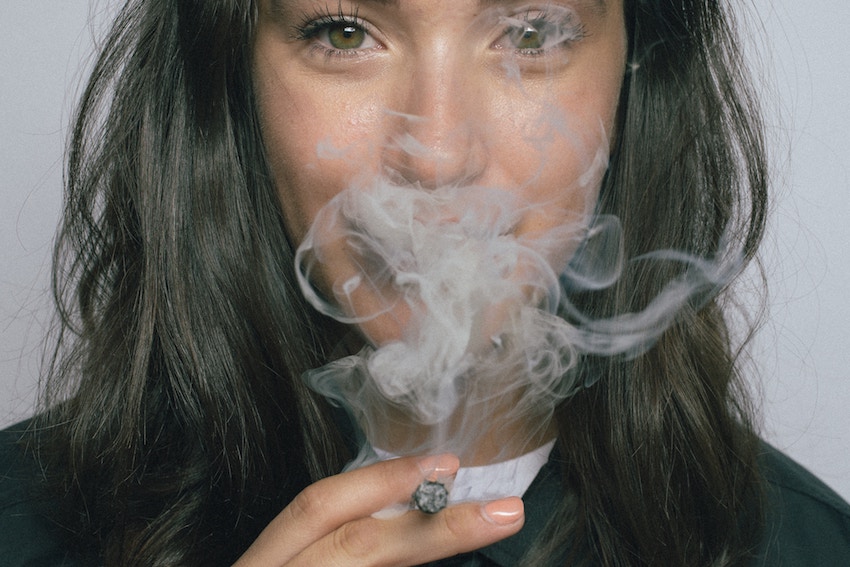
Whether you are trying to sell beer, cannabis, liquor, or even something "safe" like shoes, just remember the power of the people and how your business can be influenced by that power.
Even though history seems to be repeating itself, the basic issues of marketing have affected each of these industries equally.
Knowing that cannabis popularity is on the rise is rewarding, but the battle is far from over. In order to market these industries properly, marketers and designers have to fully understand their consumers’ wants and needs.
In order to market the substance industries properly, marketers and designers have to fully understand their consumers' wants and needs.
If you take the time to educate your customers about your products and how they will benefit their lifestyle, selling will be much easier. In time, through the ability to educate consumers, I think a lot of the laws in place will slowly be lifted.
There may be a lot of regulation on the cannabis industry, but that doesn’t mean they are doomed to fail.




